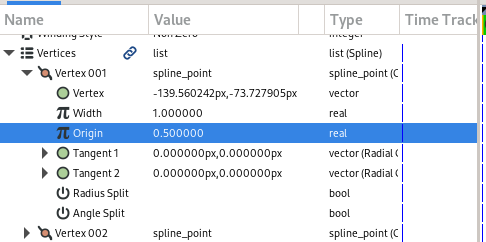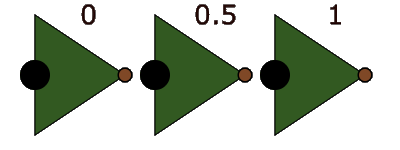Well, my topic says everything:
What is the meaning of vertex “Origin” parameter of a Spline?
Does anybody here know? Should we get rid of it?

Well, my topic says everything:
What is the meaning of vertex “Origin” parameter of a Spline?
Does anybody here know? Should we get rid of it?

‘Origin’ tells vertex to which neighbor it should move to when you remove it in ‘animation’ mode. Better to illustrate with a quick example:

Source:OriginOfVertex.sif (58.5 KB)
P.S. Thanks for asking before committing changes. Please, be careful when removing parameters. Synfig already doesn’t have much and what it has almost always has reason for it. And yes, I am still mad about that time when someone removed ‘Fall off’ parameter from ‘Circle’ layer without any discussion.
+1
In any case a modification in file format/behaviour should be compensated in import/export.
Not to break existing projects when upgrading the software…
Nor to prevent using a previous version, maybe more stable when a newer version is used to create the project ![]()
Thank you for the clear explanation.
Now I think the parameter name, its tooltip and position (in parameter list) could be improved. ![]()
What did it do? From the logs I can only see it supported “linear” value only.
Yes, I do agree on that. The name isn’t very intuitive, but I can’t come up with anything that’s much better.
You have to go as far as version 0.64. In that version, parameter ‘Falloff’ supported 5 types: Linear, Squared, Square Root, Sigmond, and Cosine. They provided a finer control for how feathering works. I myself used it in my experiments with particle template to make particles based on ‘Circle’ layer look more appealing.
Here’s animation of all 5 types of ‘Falloff’ switching between each other:

I would argue that this parameter not only should have been kept but also implemented for every layer that supports feathering. But alas, it got nuked.